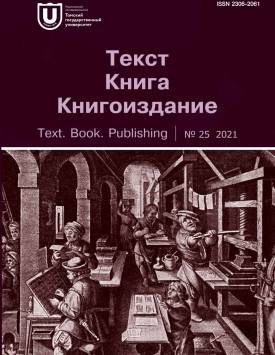Literary and Editing Studies in the Classroom: Experimental Textual and Contextual Analysis
The problem addressed and solved in the essay concerns the complexity of drawing and mediating senses in the reader’s interaction with the text through the process of context-detached close reading followed by the step-by-step disclosure of biographical, editorial, publishing, and literary contexts. Through the demonstration of the observations based on the seminar in-class workshop activity, the author’s aim is to demonstrate the connection between literary and editorial studies and their mutual dependence in the process of analysing and interpreting texts of literature on the basis of a passage from Joseph Conrad’s Lord Jim. In this essay, significant outcomes are reported on the example of the specific analysis of the literary passage in the process of answering questions from textual through contextual considerations. As regards the research material used, the author uses a page-long passage of Conrad’s Lord Jim as the underlying text used in the analysis. The text was in its basic textual format with as much paratextual content removed as possible: the font was simple and its size of standard kind, the spaces between lines and paragraphs were kept in the default setting, thus ensuring there were no typographical sources of distraction. The passage was presented in its paper format. Using external resources and digital devices was not possible. In the consecutive stages, the analysis made use of the textual, editorial, publishing, literary, biographical, encyclopaedic, and other contextual studies accessed via the university online reading services available in class, which was possible due to the classroom infrastructure available and indispensable for the completion of the project. In the later stages, visuals related to Lord Jim found online were also used. In terms of the methods employed, the author has based the research on the principle of from-detached-to-contextual reading and the discussion approach. The opening method concerned individual interaction with the textual passage deprived of as many paratextual elements as possible, so that making it possible for the reader to extract as much information and as many meanings from the excerpt as possible. In the consecutive stages, contextual aspects were gradually disclosed through the system of questions requiring research on specific points related to the text. The course of the research involved consecutive sessions of the university seminar on textual and editorial aspects of literary works. Each phase involved specific patterns of interaction between the literary text and the readerly audience. The conclusions show the directions in which senses progress following the close reading session and through the gradual disclosure of particular contextual aspects. They also demonstrate both the complexity of the reading interaction - involving textual, literary, editorial, typographical, publishing and biographical contexts - and the importance of such a combination in the process of drawing senses initially based on the passage detached from its paratextual dimensions.
Keywords
editing studies, Joseph Conrad, textual criticism, classroom analysis, Lord JimAuthors
| Name | Organization | |
| Koneczniak Grzegorz | Nicolaus Copernicus University in Torun | gregorex@umk.pl |
References

Literary and Editing Studies in the Classroom: Experimental Textual and Contextual Analysis | Tekst. Kniga. Knigoizdanie - Text. Book. Publishing. 2021. № 25. DOI: 10.17223/23062061/25/8
